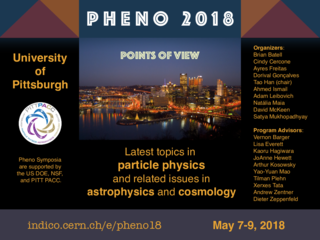Speaker
Description
The properties of the dark matters, massive graviton and galaxy clusters are discussed in terms of the new three-dimensional quantized space model. Three new particles (bastons) with the electric charges (EC) are proposed as the dark matters [1]. And the rest mass of 1.4 TeV/c2 is assigned to the Le particle with the EC charge of -2e based on the data of DAMP (Dark Matter Particle Explorer) [1]. The 3.5 and 74.9 keV X-ray peaks observed from the cosmic X-ray background spectra support the presence of the Q1 quark with the EC of -4e/3. The rest mass and force range of the massive g(0,0,0) graviton with the Planck size are mg=3.1872 10-31 eV/c2 and xr = 3.0955 1023 m = 10.0 Mpc, respectively, based on the experimental rest mass and rms charge radius of the proton [1]. The possible diameter (10 Mpc) of the largest galaxy cluster is remarkably consistent with the gravitational force range (10 Mpc). Then, the diameter of the largest dark matter distribution related to the largest galaxy cluster is 9.2865 1023 m = 30 Mpc equal to the force range of the massive g(0) graviton with the rest mass of 1.0624 10-31 eV/c2. The reason why the gravitational force between matters is very weak when compared with other forces is explained by the graviton evaporation and photon confinement. Because of the huge number (N) of the evaporated gravitons into the x1x2x3 space, it is concluded that the gravitational force between dark matters should be much stronger than the gravitational force between the matters and the repulsive electromagnetic force between dark matters [1]. The proposed weak gravitational force between the dark matters and normal matters explains the observed dark matter distributions of the bullet cluster, Abell 1689 cluster and Abell 520 cluster. The transition from the galaxy without the dark matters to the galaxy with the dark matters are explained. Also, the accelerated space expansion is caused by the new space quanta created by the evaporated gravitons into the x1x2x3 space and repulsive electromagnetic force between dark matters corresponding to the dark energy. And the space evolution can be described by using these graviton evaporation and repulsive electromagnetic force, too. And three dark matters, three heavy leptons and three heavy quarks which are proposed in the present work [1] need to be confirmed from the high energy cosmic ray and cosmic gamma ray measurements of the high energy astrophysics.
[1] J.K. Hwang, http://meetings.aps.org/Meeting/APR18/Session/G09.6 (talk at 2018 APS April meeting).

